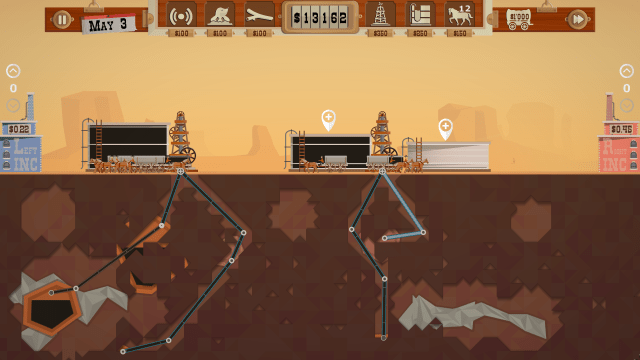Worth a Look: The Steam Winter Sale 2017, Part 4
The Steam Winter Sale 2017 began on December 21. One of the things that I noticed looking through the items on sale were the surprising number of games that I have played this year (or even earlier!). It seemed like a good time to go and highlight a few of the games that are on sale now that I have talked about on the show. This fourth part of a multi-part series looks at Chroma Squad, Rogue Legacy, and Steamworld Dig. Take a look at the third part here: http://forallintents.net/worth-a-look-the-steam-winter-sale-2017-part-3/.
Chroma Squad
Chroma Squad by Behold Studios is one of those games that I never would have guessed I would have wanted: a tactical RPG themed around the production of a Super Sentai style show. Or, as one reviewer described it, “Power Rangers crossed with XCOM with a dash of Game Dev Story.” Yet, somehow, the theme works really well, resulting in a fun game that scratches that tactical RPG itch with a lighthearted sense of humor.

Perhaps one of the stranger aspects of the game is the meta narrative: the player controls a group of stunt actors who decide to create their own Super Sentai show. The game is divided between turn based battles, in which the cast acts out an episode of the show, and the time between episodes, where you create new costumes and upgrade the production equipment. This creates a unique spin on the RPG aspect of the game, with character improvement being tied to things like upgraded costumes. The battles are important insomuch that success and achieving bonus goals reflects on the show’s popularity with fans. It’s not enough that you win battles; there are goals that you have to meat in order to keep viewers happy and engaged. Do poorly and you may even find your show getting cancelled.

You can hear me discuss Chroma Squad back in Episode 131 – A Magical Failure. Since then, the game has expanded to include a new “Director’s Cut” free update which adds some new game modes and tweaks some of the play experience. The game is also available on other platforms, including iOS and Android, so you can take the excitement of Super Sentai with you wherever you go.
Check out Chroma Squad for Steam here: http://store.steampowered.com/app/251130/Chroma_Squad/.
Rogue Legacy
Rogue Legacy was the breakthrough hit Rogue-lite platform action-adventure game by Cellar Door Games, developer of a number of free Flash games like Don’t Shit Your Pants. Basically, it combines the difficulty and random generation of Roguelike games with the platform action-adventure of Metroidvania style games in a unique combination.

The story of Rogue Legacy is relatively straight-forward: you play as a line of royal descendants entering a castle to find a great treasure. Every time your character dies (which is inevitable, given the nature of the game), you choose a new descendant to take his or her place. You have three options, each with their own combination of abilities and disabilities that will make that next play-through unique. You keep the gold and other items that you find through each expedition into the castle. These can be used to make further generations more powerful, either through purchasing new equipment or upgrading your castle (which, in turn, makes your heroes more powerful). Although the game can be frustratingly difficult at times, it still makes for a really fun game that captures the feel of a Roguelike without being too punishing.

Rogue Legacy has actually come up in the show multiple times, back in 2014-2015. Andrew first mentioned the game back in Episode 27 – Super Sleep Mode. Dan started playing in Episode 53 – With Space Hands and continues discussing his experience in Episode 54 – Noun the Adjective. The game is available on Steam but also available for consoles (PS4, XBox One).
Check out Rogue Legacy for Steam here: http://store.steampowered.com/app/241600/Rogue_Legacy/.
Steamworld Dig
Steamworld Dig, by Image & Form Games, is the second entry in the “Steamworld” series of games that includes Steamworld Heist. Part platform mining game, part Metroidvania, the game follows the adventure of a steam powered robot named Rusty who inherits his uncle’s ore mine. Most of the game focuses on carefully digging through the mine, collecting valuable ore while making sure you don’t dig too much and get stuck.

I will admit (again) that I am always a sucker for games that have that Metroidvania feel and Steamworld Dig did a very good job of capturing the essence of what I liked from a game like Castlevania: Symphony of the Night. In a way, what it brings together is the best of platform action-adventure games with a reasonable dose of RPG gameplay. The game doesn’t do as much for exploring as some of the classic Metroidvania games, as most of the exploring is going further down the mine, but it manages to be a lot of fun. Perhaps, the only real complaint I had was that I was done with it so quickly; I sat down to play the game on a day off and found myself at the end before I even realized it.

For whatever reason, I never actually talked about playing through Steamworld Dig on the show. It probably has something to do with the fact that I finished it quickly enough that it didn’t make its way into my Week in Geek. However, it’s worth mentioning that since I played it, they’ve actually released a sequel to the game, Steamworld Dig 2.
Check out Steamworld Dig for Steam here: http://store.steampowered.com/app/252410/SteamWorld_Dig/
































